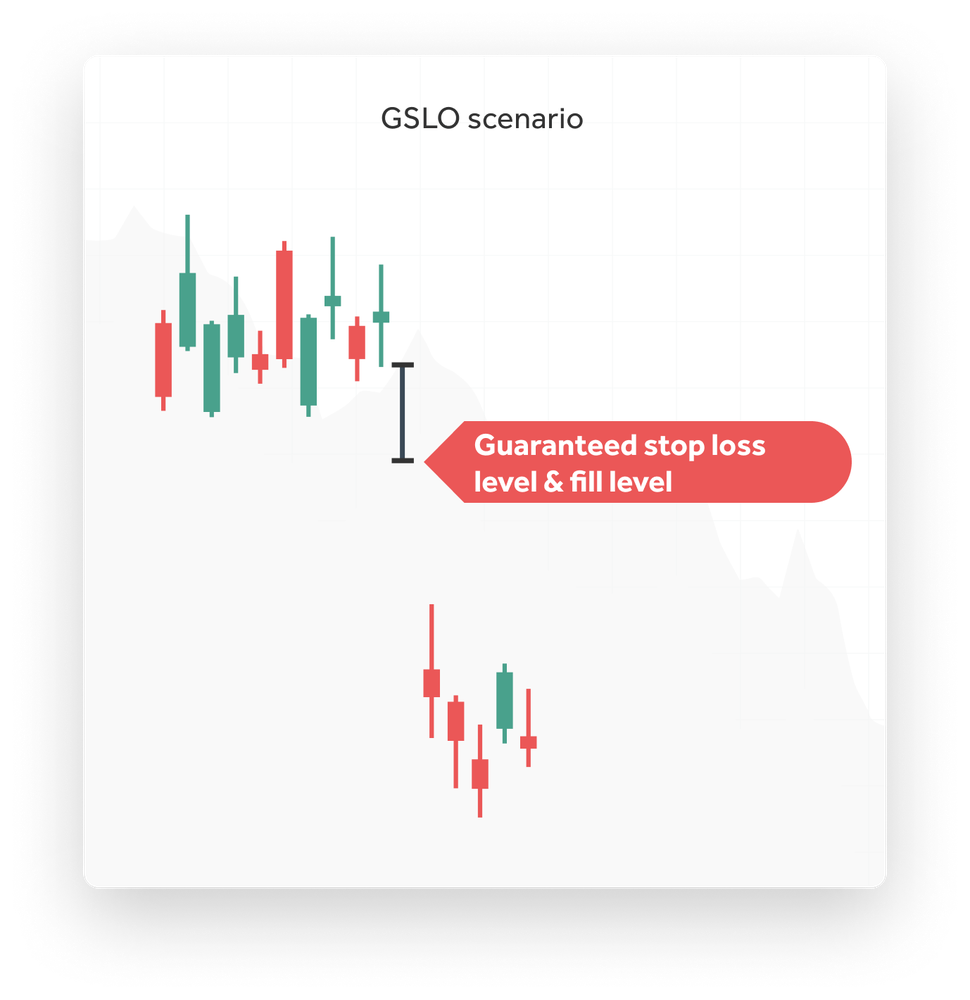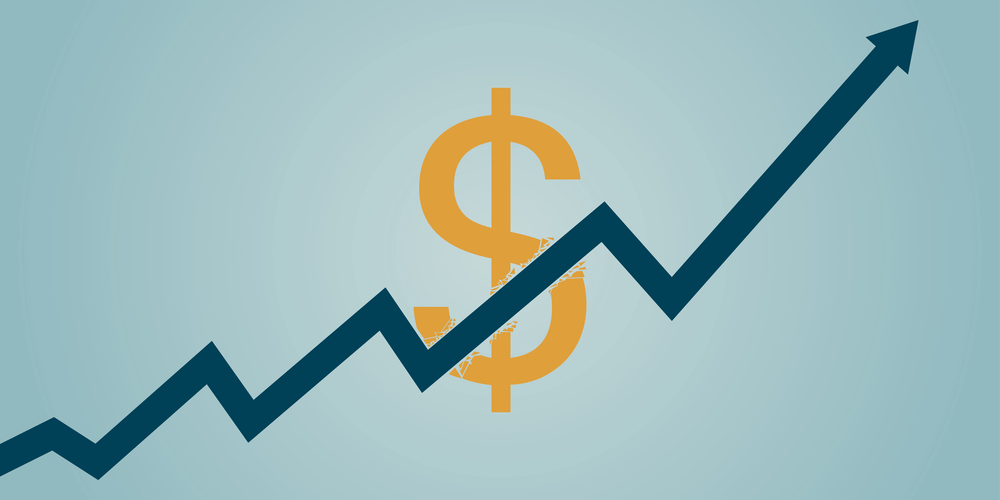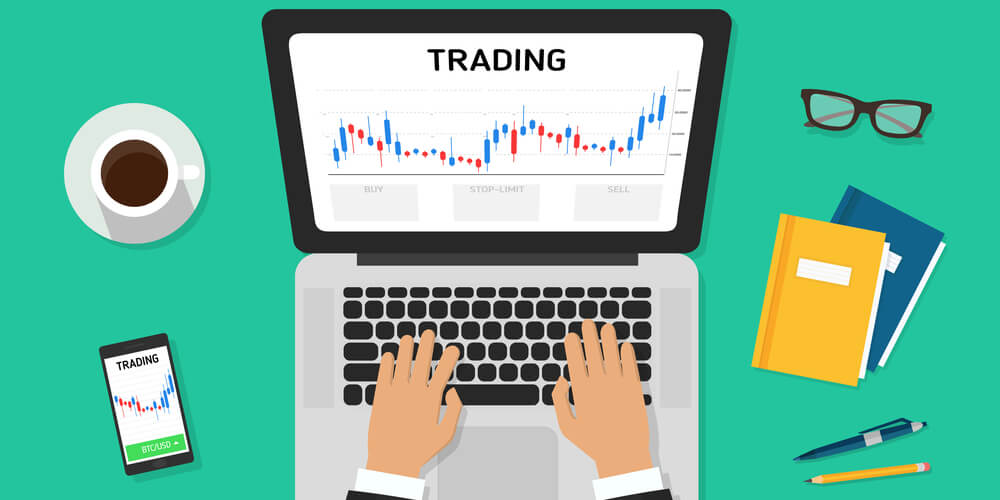A guaranteed stop loss is a useful tool for forex traders in some circumstances as a way to exit a trade. Learn about how it works and the best ways to use it.
- What is the difference between a stop loss and a guaranteed stop loss?
- Guaranteed stop loss premium
- Which markets are best for a guaranteed stop loss?
- Restrictions on guaranteed stop losses
- How to place a guaranteed stop loss
- Why use a guaranteed stop loss?
- Where to place a guaranteed stop loss
Introduction to a stop loss
It is possible to close a trade in forex, stocks, indices or any other market using the close button on the trading platform. However, this means that you must be sat watching your trade all the time. This is time consuming and often not possible, not to mention the emotions that could be involved if you were to trade this way.
The alternative is to place an order for your position to close should the asset or forex pair you are trading reach a certain level. If you are leaving an order to close at a profit, this is called a 'Take Profit' order. An order to close at a loss is a 'stop loss.'
What is the difference between a stop loss and a guaranteed stop loss?
A standard stop loss closes your position at the first available price at or after your pre-selected stop loss price. Your stop loss is subject to market price gapping also known as slippage. What this means is that if you have a long position in a stock index and place at stop loss at 7550, supposing that market price doesn’t trade exactly at 7550 but instead drops from 7554 to 7549, your position will be closed out at 7549. This is the first traded price at or after your pre-selected stop loss price.
A guaranteed stop loss works differently. You pay a small premium to guarantee that your trade will be closed out at your pre-selected price no matter what. So, in the above example had you paid for a guaranteed stop loss at 7550 and the market didn’t trade at that price, it just dropped to 7549, you would still be closed out 7550. The example was for the price of a stock index but it works the same way in forex, if for example you had a trade on AUD/USD at 0.7550.
Guaranteed stop loss premium
The cost of using a guaranteed stop loss should be shown in the trading platform before you place the trade. You will see this as a withdrawal under your transactions tab. You pay for the guaranteed stop loss when you leave the order, regardless if it is activated or not. If you place a guaranteed stop loss on your trade but it is never activated because the price never reaches your pre-selected level, you will still be charged.
Given that you are trading to make a profit it is important that you factor in the cost of a guaranteed stop loss into your trading plan to ensure that your trade is still profitable with the extra charge. A guaranteed stop loss premium is an additional cost to the spread, overnight financing or commission charges that can also be applied.
Which markets are best for a guaranteed stop loss?
It is also worth noting that a guaranteed stop loss is only available on some markets, usually the most liquid markets. You would be able to place a guaranteed stop loss on the FTSE 100 index or a major forex pair like GBP/UUSD or a UK stock like Tesco for example. However, not on small cap stocks or exotic forex pairs with lower liquidity. Check before you open a trade to see whether you are able to place a guaranteed stop loss if you are interested in using it. This can be checked on the market information sheets.
Restrictions on guaranteed stop losses
Note that guaranteed stop losses can only be placed when the trade is being placed. There is not an option to add a guaranteed stop loss once the position is open. For example, you have a position on UBS. Some terrible news came out regarding UBS at 18:00 one evening. You know that when the market opens in the morning UBS shares are going to dive. You can add a standard stop loss but not a guaranteed stop loss.
As we discussed earlier, with a standard stop loss you would still be liable for any gapping when the market opens the following morning. Your position would be closed at the first traded price.
How to place a guaranteed stop loss
When you have the deal ticket up, click the box for a stop loss. Then you will be able to select where you want your stop loss to go. This could be in points or a price level. If a guaranteed stop loss is available for your selected market you will see a box to tick. This will also confirm how many points you will be charged. The following chart shows a Guaranteed stop loss (GSLO) example:

(Source: Oanda.com)
Finally, there is a minimum distance from the current price that guaranteed stop losses can be placed. In Forex trades this will be a number of pips and is typically larger than the spread of the forex pair being traded. If your guaranteed stop loss is not being accepted, this is usually the issue. Further details can be found on the market information sheets.
Why use a guaranteed stop loss?
As guaranteed stop losses prevent losses from market gapping, they are best used as part of a risk management strategy in volatile markets. When the price of a currency or stock is jumping around from one level to another without trading in between levels, a guaranteed stop loss can be well worth the additional cost.
Beginners are often fond of using guaranteed stops until they become more comfortable and familiar with the markets that they are trading. If this is you, make sure that even with the cost of guaranteed stop loss premium your trade is still able to return a profit, otherwise it defeats the idea of trading!
Where to place a guaranteed stop loss
You should place any stop loss be it guaranteed or standard at a level which, if reached, confirms that your trade was wrong. Remember not every trade will be right! Perhaps the most common mistake is to place a stop loss solely on your risk tolerance level. What you should be doing is placing your stop loss according to the market structure i.e. where the forex market stopped on previous occasions.
So rather than saying I will place my guaranteed stop loss 50 points away because that is what I can afford, you should be using support and resistance levels, trend lines or moving averages, for example, to identify the best points to set a stop loss.










